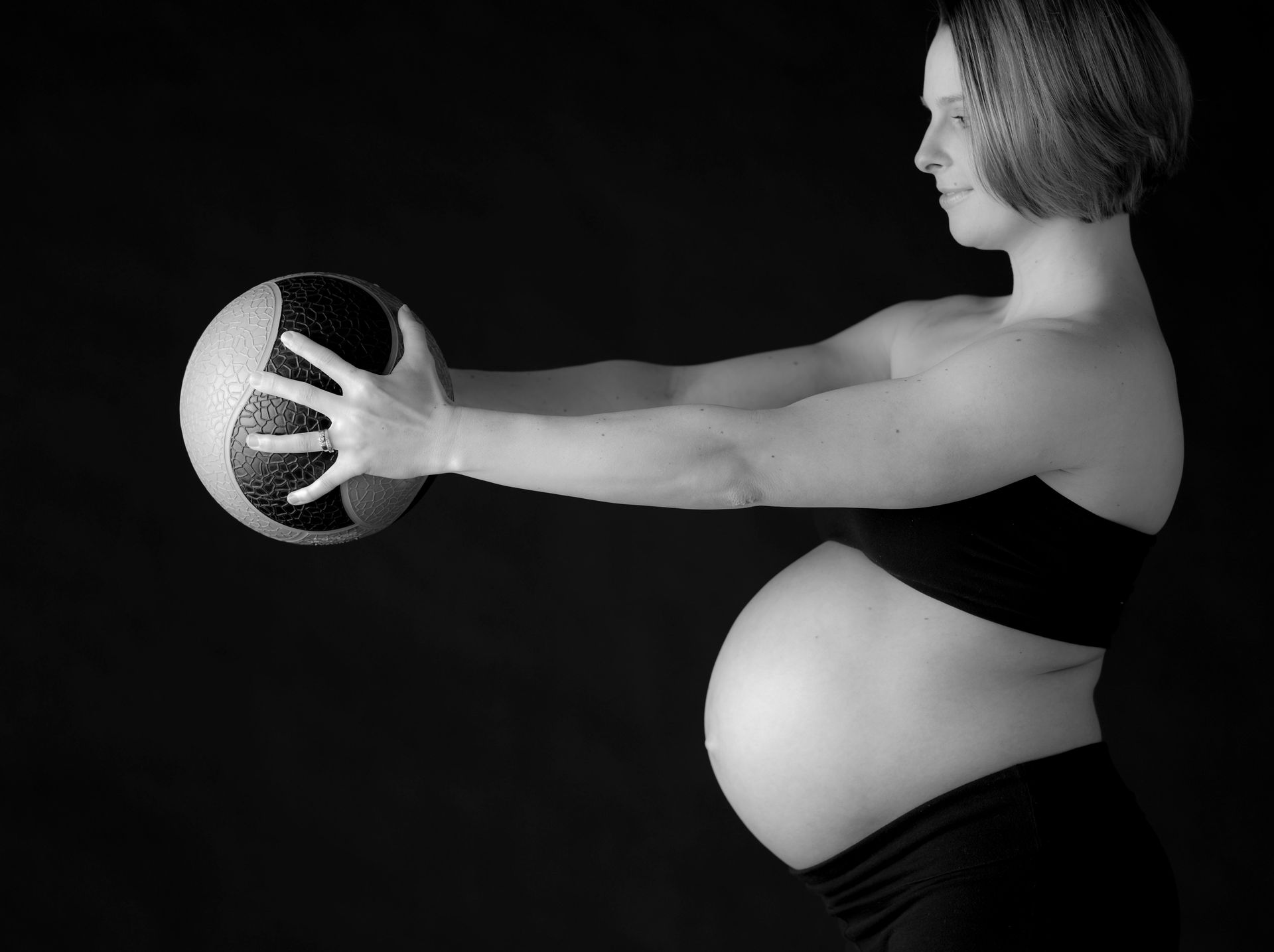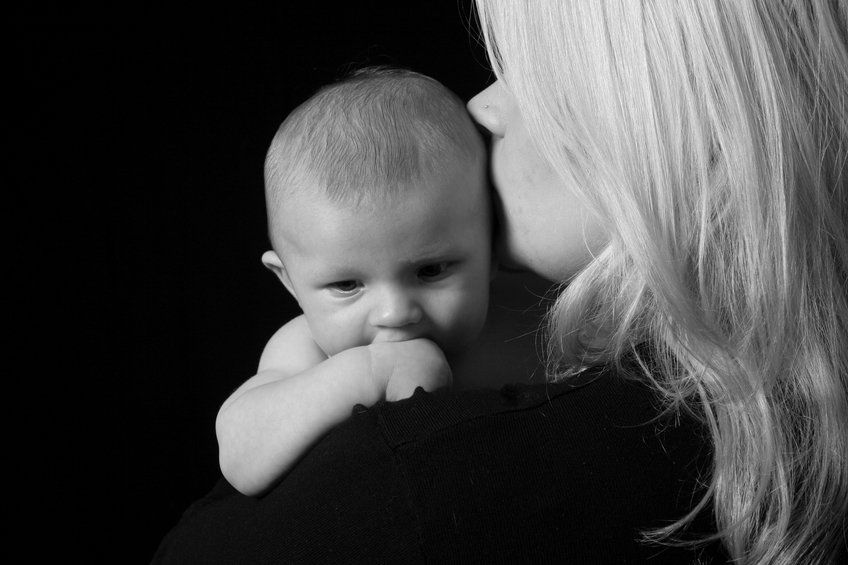Palm Springs: 760-884-8840 West Hollywood: 323-366-8665 New York: 917-549-8998 Email: info@bumpwellness.com

By Jason Keigher
•
21 Jan, 2018
ACOG Exercise GuidelinesThere is no clinical information to indicate that pregnant women should limit exercise intensity and lower target heart rates because of potential adverse effects. For women who do not have any additional risk factors for adverse maternal or perinatal outcomes, the following recommendations may be made:
1. During pregnancy, women can continue to exercise and derive health benefits even from mild to moderate exercise routines. Regular exercise (at least three times per week) is preferable to intermittent activity.
2. Women should avoid exercise in the supine position [lying on the back] after the first trimester. Such a position is associated with decreased cardiac output in most pregnant women; because the remaining cardiac output will be preferentially distributed away from splanchnic beds [the gut area] (including the uterus) during vigorous exercise, such regimens are best avoided during pregnancy. Prolonged periods of motionless standing should also be avoided.
3. Women should be aware of the decreased oxygen available for aerobic exercise during pregnancy. They should be encouraged to modify the intensity of their exercise according to maternal symptoms. Pregnant women should stop exercising when fatigued and not exercise to exhaustion. Weight-bearing exercises may under some circumstances be continued at intensities similar to those prior to pregnancy throughout pregnancy. Non-weight-bearing exercises such as cycling or swimming will minimize the risk of injury and facilitate the continuation of exercise during pregnancy.
4. Morphologic changes in pregnancy [a woman's changing size, shape and weight] should serve as a relative contraindication to types of exercise in which loss of balance could be detrimental to maternal or fetal well-being, especially in the third trimester. Further, any type of exercise involving the potential for even mild abdominal trauma should be avoided.
5. Pregnancy requires an additional 300 calories a day in order to maintain metabolic homeostasis [stable body functioning]. Thus, women who exercise during pregnancy should be particularly careful to ensure an adequate diet.
6. Pregnant women who exercise in the first trimester should augment heat dissipation by ensuring adequate hydration [drink water], appropriate clothing, and optimal environmental surroundings during exercise.
7. Many of the physiologic and morphologic changes of pregnancy persist four to six weeks postpartum. Thus, pre-pregnancy exercise routines should be resumed gradually based on a woman's physical capability.
Contraindications to Exercise
The aforementioned recommendations are intended for women who do not have any additional risk factors for adverse maternal or perinatal outcome. A number of medical or obstetric conditions may lead the obstetrician to recommend modifications of these principles. The following conditions should be considered contraindications to exercise during pregnancy:
Pregnancy-induced hypertension
Pre-term rupture of membranes
Pre-term labor during the prior or current pregnancy or both
Incompetent cervix/cerclage [a surgical procedure to close the cervix to keep the fetus intact in utero]
Persistent second or third-trimester bleeding
Intrauterine growth retardation
In addition, women with certain other medical or obstetric conditions, including chronic hypertension or active thyroid, cardiac, vascular or pulmonary disease, should be evaluated carefully in order to determine whether an exercise program is appropriate.
1. During pregnancy, women can continue to exercise and derive health benefits even from mild to moderate exercise routines. Regular exercise (at least three times per week) is preferable to intermittent activity.
2. Women should avoid exercise in the supine position [lying on the back] after the first trimester. Such a position is associated with decreased cardiac output in most pregnant women; because the remaining cardiac output will be preferentially distributed away from splanchnic beds [the gut area] (including the uterus) during vigorous exercise, such regimens are best avoided during pregnancy. Prolonged periods of motionless standing should also be avoided.
3. Women should be aware of the decreased oxygen available for aerobic exercise during pregnancy. They should be encouraged to modify the intensity of their exercise according to maternal symptoms. Pregnant women should stop exercising when fatigued and not exercise to exhaustion. Weight-bearing exercises may under some circumstances be continued at intensities similar to those prior to pregnancy throughout pregnancy. Non-weight-bearing exercises such as cycling or swimming will minimize the risk of injury and facilitate the continuation of exercise during pregnancy.
4. Morphologic changes in pregnancy [a woman's changing size, shape and weight] should serve as a relative contraindication to types of exercise in which loss of balance could be detrimental to maternal or fetal well-being, especially in the third trimester. Further, any type of exercise involving the potential for even mild abdominal trauma should be avoided.
5. Pregnancy requires an additional 300 calories a day in order to maintain metabolic homeostasis [stable body functioning]. Thus, women who exercise during pregnancy should be particularly careful to ensure an adequate diet.
6. Pregnant women who exercise in the first trimester should augment heat dissipation by ensuring adequate hydration [drink water], appropriate clothing, and optimal environmental surroundings during exercise.
7. Many of the physiologic and morphologic changes of pregnancy persist four to six weeks postpartum. Thus, pre-pregnancy exercise routines should be resumed gradually based on a woman's physical capability.
Contraindications to Exercise
The aforementioned recommendations are intended for women who do not have any additional risk factors for adverse maternal or perinatal outcome. A number of medical or obstetric conditions may lead the obstetrician to recommend modifications of these principles. The following conditions should be considered contraindications to exercise during pregnancy:
Pregnancy-induced hypertension
Pre-term rupture of membranes
Pre-term labor during the prior or current pregnancy or both
Incompetent cervix/cerclage [a surgical procedure to close the cervix to keep the fetus intact in utero]
Persistent second or third-trimester bleeding
Intrauterine growth retardation
In addition, women with certain other medical or obstetric conditions, including chronic hypertension or active thyroid, cardiac, vascular or pulmonary disease, should be evaluated carefully in order to determine whether an exercise program is appropriate.

By Jason Keigher
•
01 Nov, 2017
Avoid injury or overexertion with mild to moderate exercise. Staying fit during pregnancy is an important part of feeling your best. If yours is a low-risk pregnancy, and your doctor approves, you can continue to exercise and derive health benefits even from mild-to-moderate exercise routines. The American College of Obstetricians and Gynecologists recommends following these guidelines to ensure a healthy pregnancy for you and your baby.
Stay consistent Exercise regularly (at least three times a week) -- not intermittently. Exercising three days a week is a good routine. Keep your exercise regimen in the mild-to-moderate range.
Easy does it Avoid activities that require jumping motions or sudden changes in direction because these may strain your joints and injure you.
Watch your back Don't exercise on your back after the first trimester. Also, avoid prolonged periods of motionless standing. Both actions can reduce blood flow to the uterus.
Don't overexert yourself Be aware that you have less oxygen available for exercise. Stop exercising when you become fatigued, and don't exercise to the point of exhaustion.
Keep your balance Avoid exercises that could cause a quick loss of balance or mild trauma to the abdomen.
Eat a good diet Be sure you eat an adequate diet that allows you to gain 25 to 35 pounds over the nine months. Most pregnant women require an additional 300 calories a day. If you exercise regularly, you will probably require more. Include plenty of carbohydrates in your diet, as pregnant women use up this fuel source more quickly during exercise than nonpregnant women.
Drink up! Drink plenty of water to keep you hydrated and prevent overheating. Water is essential for virtually every function of the body. The average person needs eight 8-ounce glasses a day. Drink with meals, as well as before, during and after exercise. During exercise, cold water is more readily absorbed.
Get comfortable Wear comfortable, cool, and supportive clothing in layers that can be easily removed. Wear a bra that fits properly and supports your breasts.
Keep cool Be mindful not to become overheated, especially in the first trimester. According to the American College of Obstetricians and Gynecologists, overheating, especially in the first trimester, may be a contributing factor to the development of birth defects. Drink plenty of fluids before and during exercise, wear layers of "breathable" clothing, don't exercise on hot, humid days, and don't immerse yourself in a hot tub or sauna.
Avoid certain sports According to the Mayo Clinic, you'll want to avoid certain sports altogether while you're pregnant. These include activities at high altitudes and those that are associated with a risk of falling or colliding with another participant, such as horseback riding, climbing, and snow and water skiing. Also, avoid scuba diving because there's a risk that your oxygen intake could be compromised, and diving can put pressure on your organs and baby.
Stay consistent Exercise regularly (at least three times a week) -- not intermittently. Exercising three days a week is a good routine. Keep your exercise regimen in the mild-to-moderate range.
Easy does it Avoid activities that require jumping motions or sudden changes in direction because these may strain your joints and injure you.
Watch your back Don't exercise on your back after the first trimester. Also, avoid prolonged periods of motionless standing. Both actions can reduce blood flow to the uterus.
Don't overexert yourself Be aware that you have less oxygen available for exercise. Stop exercising when you become fatigued, and don't exercise to the point of exhaustion.
Keep your balance Avoid exercises that could cause a quick loss of balance or mild trauma to the abdomen.
Eat a good diet Be sure you eat an adequate diet that allows you to gain 25 to 35 pounds over the nine months. Most pregnant women require an additional 300 calories a day. If you exercise regularly, you will probably require more. Include plenty of carbohydrates in your diet, as pregnant women use up this fuel source more quickly during exercise than nonpregnant women.
Drink up! Drink plenty of water to keep you hydrated and prevent overheating. Water is essential for virtually every function of the body. The average person needs eight 8-ounce glasses a day. Drink with meals, as well as before, during and after exercise. During exercise, cold water is more readily absorbed.
Get comfortable Wear comfortable, cool, and supportive clothing in layers that can be easily removed. Wear a bra that fits properly and supports your breasts.
Keep cool Be mindful not to become overheated, especially in the first trimester. According to the American College of Obstetricians and Gynecologists, overheating, especially in the first trimester, may be a contributing factor to the development of birth defects. Drink plenty of fluids before and during exercise, wear layers of "breathable" clothing, don't exercise on hot, humid days, and don't immerse yourself in a hot tub or sauna.
Avoid certain sports According to the Mayo Clinic, you'll want to avoid certain sports altogether while you're pregnant. These include activities at high altitudes and those that are associated with a risk of falling or colliding with another participant, such as horseback riding, climbing, and snow and water skiing. Also, avoid scuba diving because there's a risk that your oxygen intake could be compromised, and diving can put pressure on your organs and baby.

By Jason Keigher
•
01 Aug, 2017
Gestational diabetes is a condition brought about by high blood glucose levels that remain high during pregnancy. The health of the fetus and mother as well as the development of the fetus can be adversely affected by this form of diabetes. Although it seems as if the pregnancy causes the diabetic response in some women there have been studies done which show they may have been predisposed to diabetes as they develop type 2 diabetes later on in life. A gestational diabetes diet plan is critical to properly managing the affects of this disease.
Routine screening for gestational diabetes is recommended during the second trimester for all pregnant women to help limit the negative impacts it can have on mother and baby. If it is not controlled it can lead to pregnancy-induced hypertension, premature birth, large fetus size, congenital abnormalities, future obesity and diabetes in the infant, and other birth complications.
A gestational diabetes diet requires dietary modifications that the mother may not be used to but to control this form of diabetes it is essential. This is accomplished through individually developed dietary prescriptions based on metabolic nutrition and lifestyle requirements. Basic changes include reduced intake of simple sugars such as white table sugar and syrups.
The simple sugars are replaced with more complex carbohydrates with a balanced intake of nutrients, particularly with the carbohydrates, during the day. To make starting this type of gestational diabetes diet plan easier a registered dietician will use exchange lists to make their clients meal planning easier.
Exchange lists were first developed for diabetic meal planning but they have become a basic tool for almost all food guides and dietary recommendations.
Another system to control diabetes, carbohydrate counting, has recently begun to see more widespread use. This system allows the client to keep track of carbohydrate intake during the course of the day.
An overall gestational diabetes diet plan takes into account the physical, psychosocial, and educational requirements. For the woman with this form of diabetes reliance on her health care providers to help manage her condition is vitally important. Her registered dietician has the primary responsibility for developing and teaching her the individualized dietary plan that will work best for her. Nurses at her doctor's office and in the hospital help reinforce these dietary needs and also are responsible for teaching her how to effectively monitor blood glucose levels and administer insulin if needed. By working together the pregnant woman and her health care team can successfully manage and overcome the risks posed by gestational diabetes.
Routine screening for gestational diabetes is recommended during the second trimester for all pregnant women to help limit the negative impacts it can have on mother and baby. If it is not controlled it can lead to pregnancy-induced hypertension, premature birth, large fetus size, congenital abnormalities, future obesity and diabetes in the infant, and other birth complications.
A gestational diabetes diet requires dietary modifications that the mother may not be used to but to control this form of diabetes it is essential. This is accomplished through individually developed dietary prescriptions based on metabolic nutrition and lifestyle requirements. Basic changes include reduced intake of simple sugars such as white table sugar and syrups.
The simple sugars are replaced with more complex carbohydrates with a balanced intake of nutrients, particularly with the carbohydrates, during the day. To make starting this type of gestational diabetes diet plan easier a registered dietician will use exchange lists to make their clients meal planning easier.
Exchange lists were first developed for diabetic meal planning but they have become a basic tool for almost all food guides and dietary recommendations.
Another system to control diabetes, carbohydrate counting, has recently begun to see more widespread use. This system allows the client to keep track of carbohydrate intake during the course of the day.
An overall gestational diabetes diet plan takes into account the physical, psychosocial, and educational requirements. For the woman with this form of diabetes reliance on her health care providers to help manage her condition is vitally important. Her registered dietician has the primary responsibility for developing and teaching her the individualized dietary plan that will work best for her. Nurses at her doctor's office and in the hospital help reinforce these dietary needs and also are responsible for teaching her how to effectively monitor blood glucose levels and administer insulin if needed. By working together the pregnant woman and her health care team can successfully manage and overcome the risks posed by gestational diabetes.

By Jason Keigher
•
24 May, 2016
Postpartum depression or peripartum depression occurs after a woman gives birth. Within a few hours of giving birth the amount of the two female hormones, estrogen and progesterone, return to their pre pregnancy levels. Many researchers feel that this drop in hormone levels, much like the smaller changes in hormone levels can affect a woman's mood just before her menstrual cycle, is one of the causes of postpartum depression.
In some women the levels of thyroid hormones decrease as well. This decrease in these hormones can lead to symptoms of depression too. Some of these symptoms include a depressed mood, a loss of interest in daily things, problems sleeping and fatigue, irritability and weight gain.
Another factor that can lead to postpartum depression is genetics. This type of depression can be passed down from mother to daughter. There is also a correlation between postpartum depression and women who suffer from severe premenstrual syndrome.
Postpartum depression is also known as the baby blues and one in ten new mothers suffer from this to one degree or another. In addition to the drastic changes in hormone levels, the presence of a new baby in the house is also a major factor in postpartum depression. A new baby can be a major stress on a new mom and this can factor into becoming depressed. Some of these factors include:
Having less free time then before the baby was born and an inability to control the time needed to get things done. The baby demands all the mothers? attention, leaving little time for herself.
Going through labor is extremely stressful and tiring for a new mom. A new mom does not have time to regain her strength post delivery because of the demands and needs of the new baby. Just getting a good nights sleep is nearly impossible with late night feedings and diaper changes.
Many new mothers question their own ability to be a good mom. They become overwhelmed with the care the new baby needs and start to worry that they aren't providing the care their baby needs.
For new moms, postpartum depression can occur with a feeling that they are no longer who they used to be. Their old schedule and ways of doing things have been replaced by the needs of their new baby. They can also feel like they have to do it all and try to take care of the new baby while doing all the things they used to do. This can be very overwhelming because chances are the care of the new baby will not allow them to accomplish all that they think they should.
New moms can also become disconnected from their partner and family. They find that their time is limited and they just don't have time to spend with the rest of their family.
For most women the "baby blues" will usually go away as their hormone levels get back to normal. But for some women the depression associated with a new baby does not go away and can steadily get worse. It is very important that women who experience any kind of depression after child birth talk to their doctor right away. Most cases of postpartum depression can be dealt with medication and some counseling.
Andrew Bicknell is a writer and owner of http://depression.health-choices-net.com. Visit his website for more information about postpartum depression and depression disorders.
In some women the levels of thyroid hormones decrease as well. This decrease in these hormones can lead to symptoms of depression too. Some of these symptoms include a depressed mood, a loss of interest in daily things, problems sleeping and fatigue, irritability and weight gain.
Another factor that can lead to postpartum depression is genetics. This type of depression can be passed down from mother to daughter. There is also a correlation between postpartum depression and women who suffer from severe premenstrual syndrome.
Postpartum depression is also known as the baby blues and one in ten new mothers suffer from this to one degree or another. In addition to the drastic changes in hormone levels, the presence of a new baby in the house is also a major factor in postpartum depression. A new baby can be a major stress on a new mom and this can factor into becoming depressed. Some of these factors include:
Having less free time then before the baby was born and an inability to control the time needed to get things done. The baby demands all the mothers? attention, leaving little time for herself.
Going through labor is extremely stressful and tiring for a new mom. A new mom does not have time to regain her strength post delivery because of the demands and needs of the new baby. Just getting a good nights sleep is nearly impossible with late night feedings and diaper changes.
Many new mothers question their own ability to be a good mom. They become overwhelmed with the care the new baby needs and start to worry that they aren't providing the care their baby needs.
For new moms, postpartum depression can occur with a feeling that they are no longer who they used to be. Their old schedule and ways of doing things have been replaced by the needs of their new baby. They can also feel like they have to do it all and try to take care of the new baby while doing all the things they used to do. This can be very overwhelming because chances are the care of the new baby will not allow them to accomplish all that they think they should.
New moms can also become disconnected from their partner and family. They find that their time is limited and they just don't have time to spend with the rest of their family.
For most women the "baby blues" will usually go away as their hormone levels get back to normal. But for some women the depression associated with a new baby does not go away and can steadily get worse. It is very important that women who experience any kind of depression after child birth talk to their doctor right away. Most cases of postpartum depression can be dealt with medication and some counseling.
Andrew Bicknell is a writer and owner of http://depression.health-choices-net.com. Visit his website for more information about postpartum depression and depression disorders.
